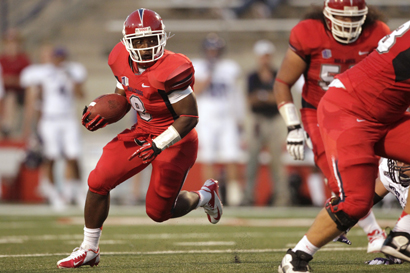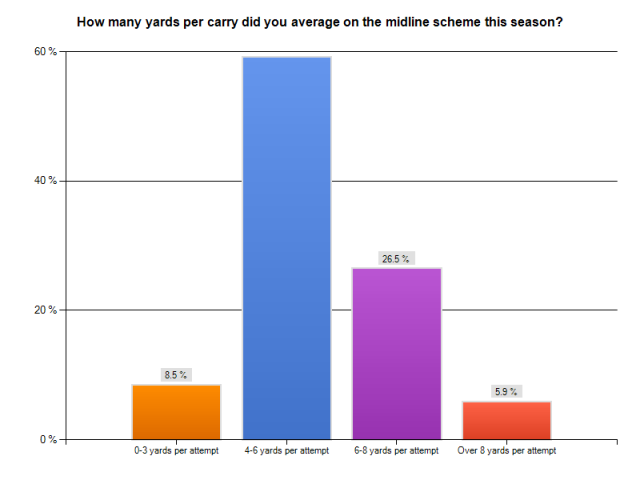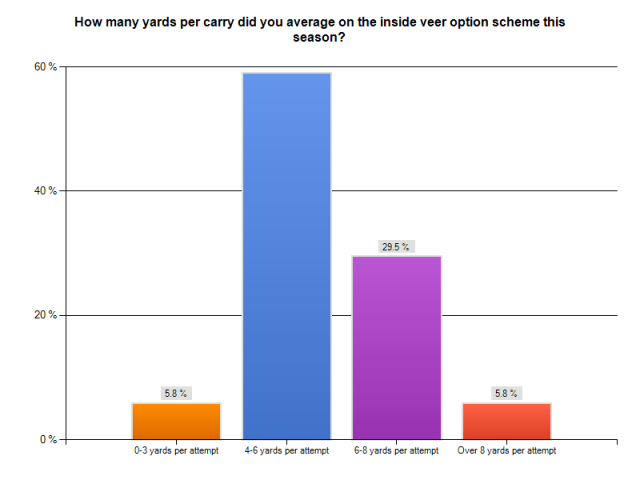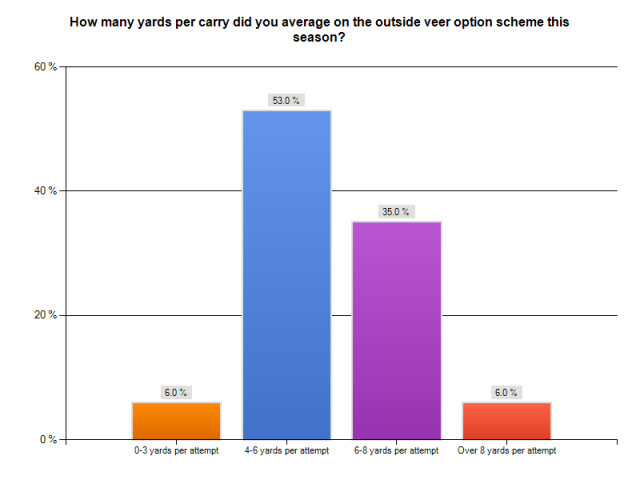By Mike Kuchar - @MikeKKuchar
Senior Research Manager
X&O Labs

Introduction
In this case, we wanted to present our data on the varying methods coaches are using to teach the mesh game in both midline and veer option concepts. Decades ago this never would have been a topic of conversation or an interest of research because all option coaches were operating under Center. But with the advent of the Pistol formation, which XandOLabs.com presented an entire special report on its dynamics- we’ve found many coaches are either committing fully to running option exclusively out of the Pistol formation or finding a way to integrate both.
But before we submit our research, it’s important to decipher the difference between midline and veer option. To most option coaches, the difference is as follows:
- Midline Option is, for the most part, a double option concept in which the first level B gap defender is the HOK (hand off key).
- (Inside) Veer Option is a triple option concept in which the first level C gap defender is the HOK (hand off key).
- (Outside) Veer Option is a triple option concept in which the first level D gap defender is the HOK (hand off key).
Editor’s Note: Coaches will utilize all three of these schemes based on what defenes present. Now, as you will find out in Case 2, there are some coaches who will run midline against an A-gap down defender and run veer to a B-gap down defender. This will all be covered in Case 2 of our special report.
Below are just a couple notes on our research about both the veer and midline option concepts. We wanted to ask our readers how productive their option concepts were. Here’s what we found:
- 59.4 percent of coaches say their midline concept averaged 4-6 yards per attempt last season. Only 8.5 percent said that it netted 0-3 yards per attempt.

- 58.7 percent of coaches say their inside veer option concept averaged 4-6 yards per attempt last season. Only 5.8 percent said that it netted 0-3 yards per attempt.

- 53.4 percent of coaches say their inside outside veer option concept averaged 4-6 yards per attempt last season. Only 6.0 percent said it netted 0-3 yards per attempt.

It should be noted that our survey on the option game was one of the more responsive surveys we conducted, with over 500 coaches (at all levels of football) chiming in with their feedback. When it came to whether or not coaches preferred to be under Center or in Gun- our results were basically split down the middle. They are as follows:
- 46.5 percent of coaches prefer to utilize the option game purely in under Center alignments.
- 23.7 percent of coaches will mix both Under Center and off-ball alignments but mainly operate Under Center.
- 22.9 percent of coaches prefer to utilize the option game exclusively in off the ball (Shotgun or Pistol) alignments.
- 7.1 percent of coaches will mix both Under Center and off-ball alignments, but mainly operate in shotgun or Pistol.
The Case for Being Under Center
Old habits die-hard. This is particularly true of football coaches and perhaps none more evident than the responses we got as to why coaches choose to run the midline and option game purely from under Center alignments. We’ve found that there have been many arguments in support of using under Center alignments in the option game. One of the stronger explanations came from Lou Cella, a 19-year football coach and option consultant who heads the website Triple Option Football Academy and runs numerous option camps around the country prepping both coaches and players on the triple option system. Cella, who is also studying to receive a doctorate in mental conditioning, recently conducted a study on the Naval Academies production per play both under Center and in the Pistol. “If you study Navy’s average yards per play from Pistol and under Center it’s astonishing,” he told us. “They are averaging less than three yards per carry in Pistol sets. When they run the triple option under Center, their yards per play is close to 8 yards.”








